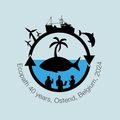Overview of the EcoScope ecosystem models using the Ecopath with Ecosim (EwE) suite
Author: Gideon Gal, IOLR
Ecosystem models using the Ecopath with Ecosim suite (EwE) lay at the core of the ecological modelling conducted in the EU-funded EcoScope project. The EwE modelling suite provides the user with tools for constructing a static mass balance model (Ecopath), a temporal dynamic model (Ecosim) and a spatially-temporally dynamic model (Ecospace). This set of models allows the user to simulate the interactions within the food web, the impacts of drivers (i.e. climate change), pressures (i.e. fisheries) and the projected consequences of policy options. The EwE suite of algorithms is one of the most popular modelling tools for investigating food-web-related questions in marine and freshwater ecosystems and examining management hypotheses, and studying and evaluating the impacts of environmental and anthropogenic pressures on the systems. All three types of models (Ecopath, Ecosim, Ecospace) can be used to explore past and future impacts of fishing and environmental change on the ecosystem. EwE models have been used to describe ecosystems in theoretical, spatial and policy analyses. The models are a pivotal and necessary product in EcoScope as they form the basis for testing and evaluating the various management and policy scenarios.

At the basis of EwE, a set of linear equations are used to estimate missing parameters under an assumption of mass balance. Ecosim calibrates the models to known biomass and catch data, and provides outputs that include historic and future biomass dynamics of each group through time, changes in mortality, food consumption and diets, and numerous ecological indicators. Ecospace replicates the dynamic analyses over a grid of spatial cells and makes predictions to address policy questions such as the establishment of marine protected areas, the effects of fishing effort and changes in essential fish habitats. Ecospace allows simulation of the ecosystem as it dynamically allocates biomass across a raster grid map, which indicates the number of habitats to which functional groups and fishing fleets are assigned. This permits alternation of trophic interaction rates, based on species habitat affinities, the location of those habitats and the regions in which the various fishing methods are utilised. In addition, external physical data (e.g. temperature, currents) and satellite data (e.g. primary production) can be input into the model and used for simulations and scenario testing. Habitats, marine protected areas (MPAs) and fisheries restricted areas (FRAs) can be added and altered, thereby allowing evaluation of temporal and spatial policies and environmental change.
The Ecoscope project includes a total of eight case studies. All the case study sites have some level of EwE models in place, and within the project, we will finalise the development of the EwE models at all sites. As a consequence, a number of Ecosim models will be available at each site and Ecospace models will be developed and implemented at select sites, based on the availability of sufficient data. Case study-specific issues such as MPAs, FRAs, and the presence and effect of non-indigenous species will be included in the model development where relevant.

Map of the European and Levantine Seas highlighting 8 case studies regions investigated
A key product of this action is the set-up and testing of management, policy and environmental scenarios, which will partly be determined based on input from policymakers and stakeholders during the planned stakeholder meetings. Multiple-level scenarios will be determined and developed. These will include local- and national-level policy and environmental issues. Thus, scenarios will also examine the synergistic effects of multiple stressors and policies on the fisheries. European-wide policy drivers, such as the Oceans and Human Health strategic research agenda, developed by H2020 SOPHIE, the Common Fisheries Policy (CFP) and the Marine Strategy Framework Directive (MSFD) will also be examined to evaluate their impact on the case study sites as well as at a holistic European-wide view.

As with all models, there is a degree of uncertainty associated with the EwE models and their outcomes. There are a number of sources of uncertainty associated with model results which are often difficult to quantify. As the outcomes of the model simulations are to provide support in the decision-making process by policymakers it is important to understand the impact of the uncertainty on model results. We will therefore extend the simulation capabilities of EwE with scenario testing under uncertainty and deep uncertainty. One approach for minimising uncertainty in the scenario testing process is by applying the Robust Decision Making (RDM) approach. The scenarios will be conducted using this approach in which the focus is not on agreeing on the assumptions of what the future will look like, but rather on the decisions. The significance of this approach is that there is no need for an agreement on the magnitude or nature of climate change, for example, but rather what is the best strategy to manage fisheries into the future given the uncertainty in future climatic conditions, what are the weaknesses in the strategy and how can they be mitigated? Evaluation of the possible strategies will result in possible solutions best optimised across plausible future realities. However, under the RDM approach rather than determining a decision for certain conditions, there would be an assessment of the reaction of fisheries, to a wide range of plausible future conditions without focusing on the likelihood of possible future conditions.






